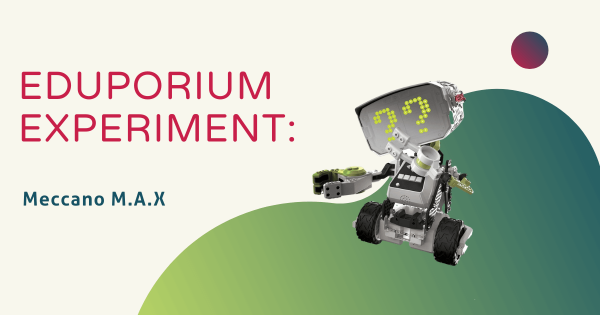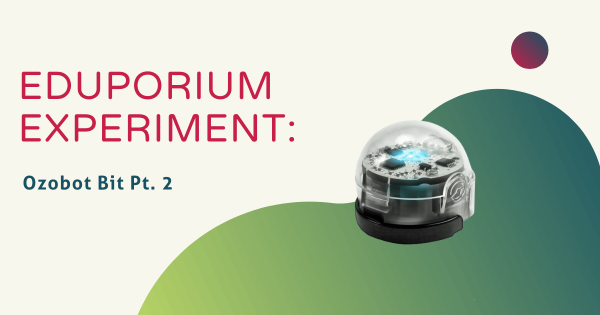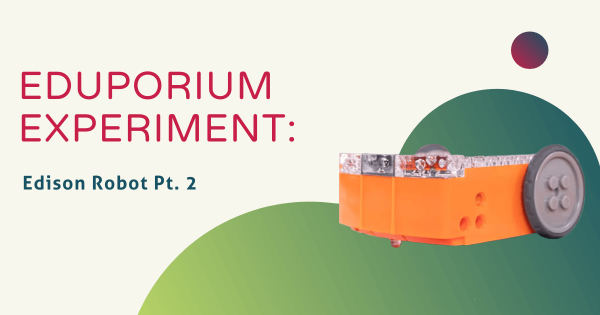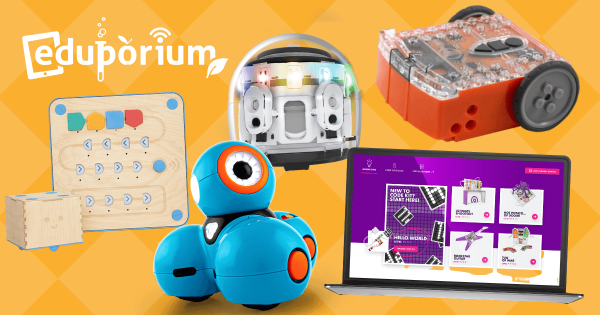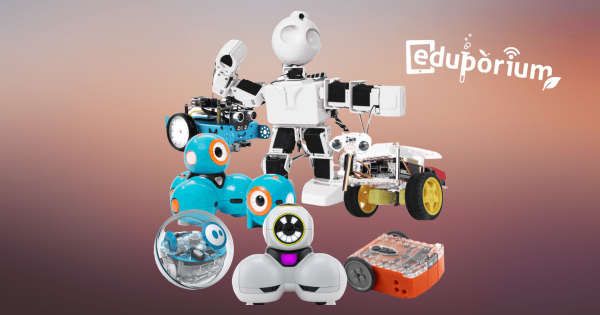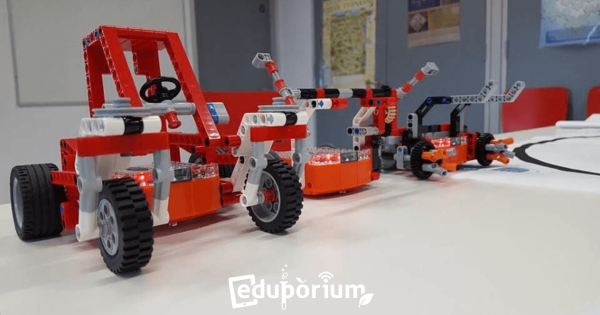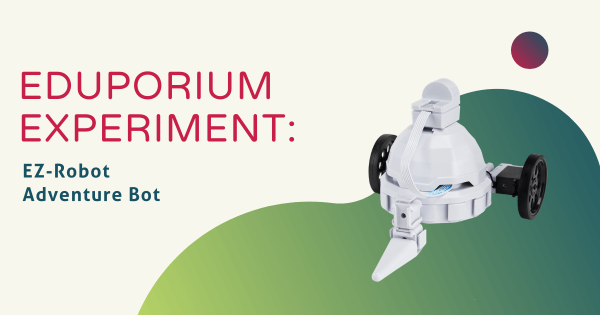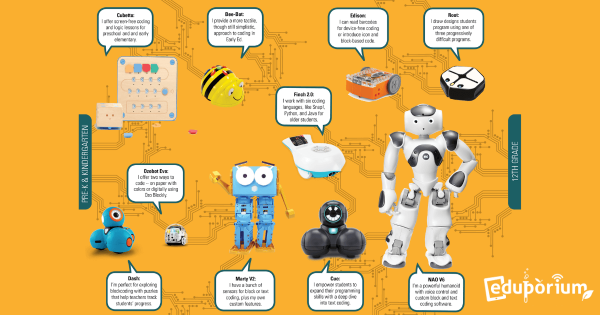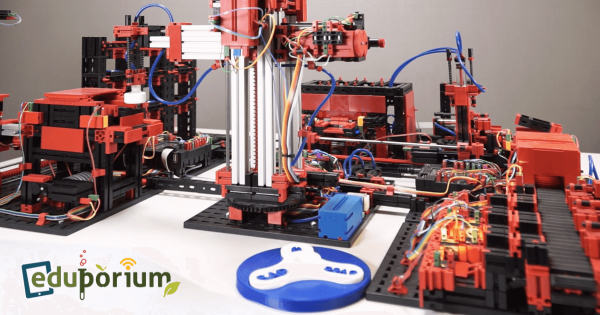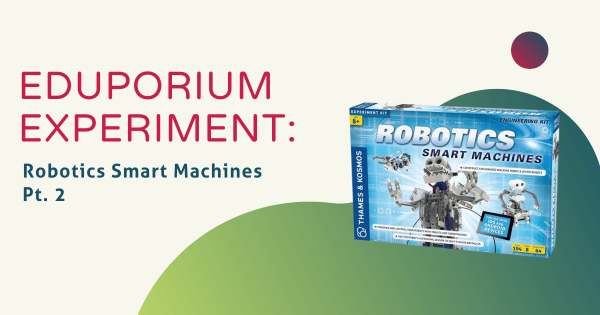The Meccano M.A.X is not only programmed to respond to certain commands, but it can also learn from kids and build knowledge about their interactions with its incredible AI technology. Students even get exposure to engineering as they build M.A.X from scratch and then teach it new behaviors, skills, and tricks using voice commands.
Robotics
Some of the most popular paths and effective approaches to preparing students for their future involve using robotics tools. A significant subsection of STEM education, coding robots and other types of programmable devices enable a large percentage of the STEAM learning that occurs in our schools. Using educational robotics tools, students from Pre-K to college can develop key coding skills. This is largely because, among these various robot kits, many are compatible with various programming languages. So, beginning in Pre-K, a child might use the Cubetto Robot in screen-free coding activities. Then, they might move on to the Bee-Bot or Blue-Bot for CS experiences that are slightly more complex. And, by the time they're in kindergarten or first grade, they have a legitimate foundation and they're ready to continue developing fluencies in coding, problem solving, and even computational thinking.
One reason robotics in education is so effective is due to various advances in robotics equipment for schools. Beyond introducing the absolute basics of coding early on (and without a screen), students can then progress to one of the most basic forms of coding, which you might know as Blockly. So many robotics tools incorporate the Blockly coding language along with their corresponding programming environment. In fact, the Ozobot Evo, Root Robot, Edison Robot, and Dash Robot are among the most popular elementary robotics tools. These help children build on coding and technology knowledge as they prepare for the next step—text programming. In text coding, they can use tools like the databot 2.0, NAO Robot, and most of the others we've mentioned. And, through these experiences, they can develop STEM skills in a tangible way while using robotics tools to do so.
-
Eduporium Experiment | Ozobot Bit Pt. 2
Although intended for kids aged 6-10, the original version of the Ozobot can help teach students of all ages thanks to its versatility and the range of different things children can do with it. Beginner students can start by experimenting with color coding using easy-to-understand OzoCodes and then build their way up to using OzoBlockly. -
Eduporium Experiment | Edison Robot Pt. 2
Edison is the perfect teaching tool for STEM activities since it’s so incredibly versatile. A while ago—about a year now at this point—we were introduced to the Edison Robot and did a nice little write-up on it in what you now know as the Eduporium Experiment. Now, it’s revamped, however, and we’ve got some new stuff to cover, so here -
10 EdTech Tools for Back to School
As another school year approaches—or maybe it’s your first one—it certainly doesn’t hurt to try new things. Many of those new things will come in the form of different educational technologies. Everything from robotics and coding to engineering, 3D printing, and virtual reality is on the table for teachers this school year. -
Get to Know the Eduporium EdTech Bundle Customization
We’ve decided to do a bit more in terms of bulk EdTech fulfillment. Our research has told us that teachers like to have a number of compatible EdTech products for students to use collaboratively. So, we thought ‘Hey, that’s a pretty good idea,’ and set out to create custom tech bundles for our partners. Here are some of our favorites. -
The Edison Robot: Get Kids Programming in 6 Unique Ways
In the past, the Edison worked with Web-based software called EdWare and was designed for use on Chromebooks. Now, Microbric, its manufacturers, have released new programming software called EdBlocks, which allows kids to program Edison more enjoyably and effectively, including with LEGO compatibility. -
Eduporium Experiment | EZ-Robot Adventure Bot
We have discovered more STEM products in the EZ-Robot line and have added all of them to our store. The EZ-Robot team really has thought of everything—well, just about everything. Joining the original models are a Battle Flipper, Galapagos Bot, and the subject of this week’s Eduporium Experiment—the EZ-Robot Adventure Bot. -
Teaching STEM with Robotics Tools that Grow with Kids
Robotics kits are incredibly valuable for teaching students the skills they really need to know. They’re useful for shaping real problem solving skills, creativity, and, most importantly, coding. The best part? Students can use robotics tools in any grade—starting in Pre-K with super simple models and continuing through high school with the more complex tools. -
The Fischertechnik Line: STEM With Something for All Students
Their top-notch designs, user-friendly integration, and expanding variety of STEM-based projects ensures that every student will remain engaged and learning while interactively doing something they enjoy! With these STEM kits from Fischertechnik, students get to follow the blueprints, design new devices, and build everyday tools, like hair dryers and windshield wipers! -
Eduporium Experiment | Robotics Smart Machines Pt. 2
Thames & Kosmos is known—at least throughout our office—as a company that perfectly combines technology, construction, and just about every STEM discipline. They have a number of hands-on kits that help kids learn the basics of solar energy, coding, atoms, and a ton more. This week, we dove into their Robotics Smart Machines Kit.




